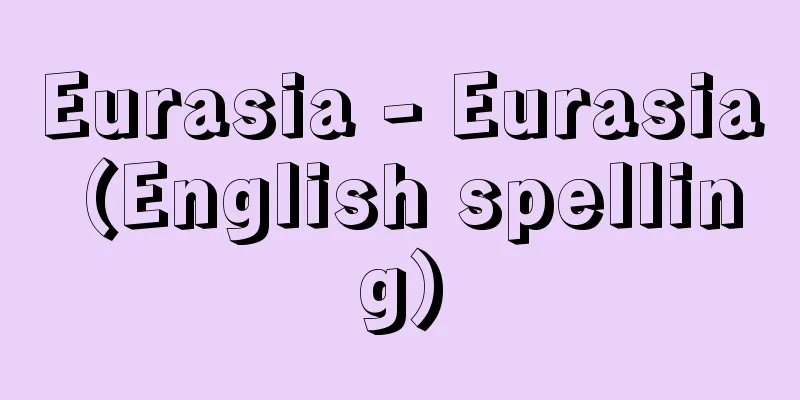Eurasia - Eurasia (English spelling)

|
The term used when both Asia and Europe are considered to be one continuous continent. It is used in terms such as "Eurasia". Its area, including its islands, is about 55 million square kilometers, the largest in the world, accounting for 36% of the Earth's total land area. Its population is about 3.3 billion, accounting for 69% of the world's total population (1984). It is also connected to the African continent by the Isthmus of Suez. From a natural geographical perspective, there is no particular reason to separate Europe and Asia. The edges are surrounded by mountain-building belts with intense earthquake and volcanic activity. [Takeshi Kubota] Source: Shogakukan Encyclopedia Nipponica About Encyclopedia Nipponica Information | Legend |
|
アジア、ヨーロッパの両州をあわせ一続きの大陸と考えたときに使用される呼称。「ユーラシア大陸」のごとく用いられる。付属島を含む面積は約5500万平方キロメートルで世界最大、地球の全陸地面積の36%に達する。人口は約33億で世界総人口の69%(1984)。アフリカ大陸ともスエズ地峡で地続きになっている。自然地理的にはヨーロッパとアジアを分ける理由はとくにない。地震や火山活動が激しい造山帯が縁辺部を囲む。 [久保田武] 出典 小学館 日本大百科全書(ニッポニカ)日本大百科全書(ニッポニカ)について 情報 | 凡例 |
<<: Eurasianism (English spelling)
>>: Fluctuation (English spelling)
Recommend
Separation of powers
A system of government in which state power is di...
STS (Medicine) - STS
...Abbreviated as STS. A general term for a test ...
Ryuyo [town] - Ryuyo
This is a former town in Iwata County, located in ...
Ashikaga Tadafuyu
[raw]? [Died] Motonaka 4 = Kakei 1 (1387).7.2. A m...
Vega, G - Vega G
...If a is a positive number other than 1 and x i...
Euphorbia adenochlora (English spelling)
…Euphorbia [Tatsuyoshi Morita]. … *Some of the te...
Republic of Transvaal
One of the Boer republics before the Union of Sout...
Spring Rain Story - Harusame Monogatari
A collection of short stories by Ueda Akinari. Af...
Takeda Izumo
A writer and promoter of Joruri Gidayu-bushi. Fir...
Railway industry - Transportation industry
... refers to a business in which an individual o...
Dost Muhammad
…His authority as king, however, depended on his ...
Cryptic coloration
…The body colors of green caterpillars and grassh...
Vavilov (English spelling) Nikolay Ivanovich Vavilov
Soviet plant geneticist and breeder. Born in Mosc...
Kurobane [town] - Kurobane
A former town in Nasu County, northeastern Tochigi...
IUGS - IUGS
《 International Union of Geological Sciences 》⇒Int...









